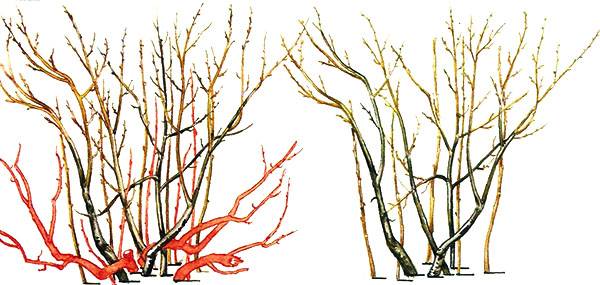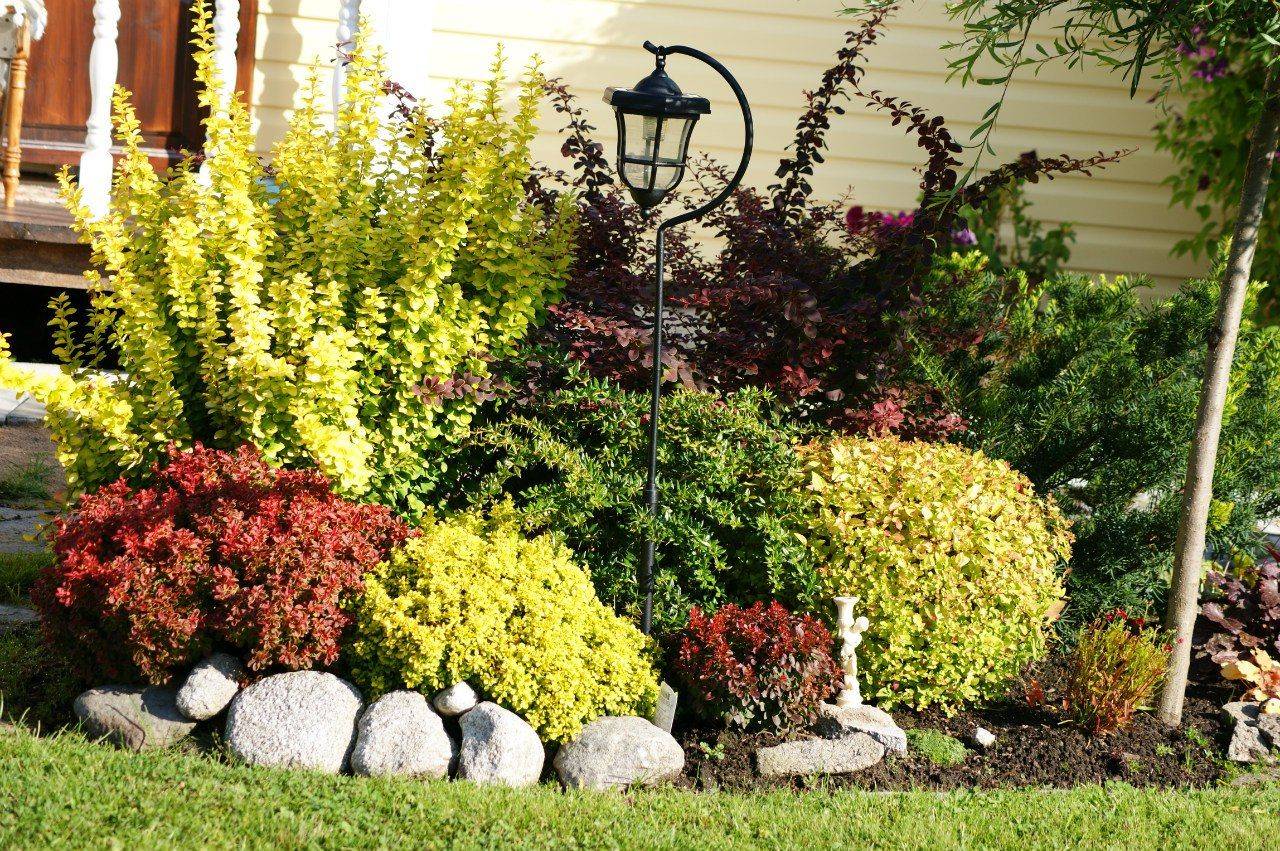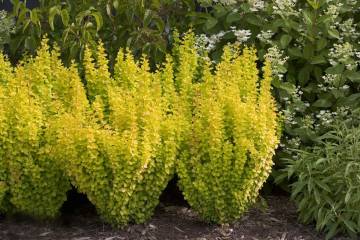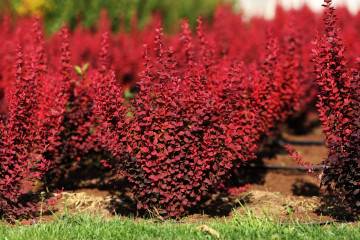Barberry Cobalt - variety description and care
Content:
Kobold Barberry Thunberg is an ornamental small shrub used in landscaping to create hedges and flower beds. The main advantage over other species is the spreading crown, which is unnecessary to take care of.
Description of barberry Cobalt
Barberry Thunberg Kobold is a small deciduous shrub. In height and width, the bush can reach half a meter. Growth is rather slow, short shoots are covered with light brown bark and sharp thorns. The shrub has a spherical crown, and therefore does not need an additional haircut.
Cobalt negatively perceives a large amount of moisture, loves light, although it can grow in the shade. Flowering begins in May. The flowers themselves, collected in yellow-red inflorescences, are bell-shaped in emerald color, they reach 1 cm in diameter. In autumn, they change the shade to yellow or red.
This variety of barberry is heat and frost resistant, tolerates drought well and does not suffer from strong winds.
Planting a plant
Planting a plant does not cause much trouble for the gardener: you need to choose the right place and make a certain substrate, the rest will not cause much trouble. It is also recommended to choose the easiest way to propagate the shrub.
Planting from seeds
Planting from seed is primarily about proper preparation. You can get them from large juicy berries that ripen in late autumn - early winter. They must be stratified. To do this, it is necessary to fold the planting material into a small bag of linen and place it in the cold (about 4 ° C). For these purposes, you can use a refrigerator.
Planting seedlings in open ground
April-May is a great time to plant seeds directly in open ground or a greenhouse. You can do this in the fall, then it is recommended to mulch, and bury the seeds in the ground to a depth of about 3 cm.
How to care for barberry Cobalt
Berberis Thunbergii Cobalt does not require much effort to take care of it. Any novice gardener can handle this. All you need to know is to avoid thickening, but also avoid frequent pruning.
Watering
Barberry Cobalt does not like excessive soil moisture, and therefore it is worth watering only as the substrate dries up. Do not flood the plant, as this is detrimental to it. It is recommended to water once every 1-2 weeks depending on weather conditions.
Top dressing
The first feeding of this variety of barberry should be done one year after planting. In the spring, it is worth adding nitrogen-containing fertilizers, which include urea. At the end of the season, it is worth mulching, adding peat. This procedure should be repeated annually without adding other items.
Pruning
Formative pruning is often not required for this variety.It can only be produced if the plant acts as a hedge. In this case, it is worth doing a haircut at the beginning and end of the season. The main pruning should be done in the spring. In this case, it is required to cut off diseased, dried shoots, as well as those that grow inside the bush.
Reproduction methods
It is allowed to use the following breeding methods for Cobalt barberry:
- vaccinations;
- seeds;
- cuttings;
- dealerships;
- layering.
The most popular and easy way is grafting. For this purpose, it is required to prepare cuttings for planting in advance. They must be at least 15 cm long with a semi-lignified stem. At the same time, before planting, it is worth treating them with a special tool to make it easier to root.
The most painful type of reproduction for barberry is the division of the bush. It is better not to transplant an adult plant at all (this can only be done together with a lump of earth), since division into several parts can be quite painful. This procedure is carried out after shedding the leaves - at the end of autumn. It is worth dividing carefully so as not to severely damage the rhizome.
Vaccinations are done in early spring, but gardeners do not resort to this method of propagation, since it is more suitable for breeders. However, if the bush has offspring, they can be cut from the mother plant and transplanted to a suitable location.
Diseases and pests
Kobold is a barberry that is resistant to negative environmental factors and diseases. Do not forget that the best way to heal is to prevent infection. It is recommended not only to treat the plant with special solutions from time to time, but also to inspect for the presence of pests.
The main danger is the barberry aphid. It feeds on plant sap, which causes the leaves to dry out. To cope with it is quite simple - spray the bushes with soap or tobacco solutions. The first is made from 300 g of laundry soap and a bucket of water. The second involves the use of 0.5 kg of shag, bred in a bucket of soapy water.
Preparing for winter
Despite the mention of such characteristics as frost resistance, barberry should be covered for the winter before it turns three years old. Only upon reaching this milestone is the plant able to withstand temperatures down to -35 ° C. The rest of the time, you need to cover it with polyethylene, cover it with foliage by 25-30 cm.When snow appears, it is worth filling the shrub with it.
Use in landscape design
The description of the barberry variety Cobalt suggests that it is used mainly for decorative purposes, despite the fact that its berries can be eaten. It is often needed as a plant that will frame an artificial pond or a garden made of stones. Cobalt also looks great as a curb, representing a low hedge.
Healing properties
Barberry has the following beneficial properties:
- diuretic effect;
- stimulates appetite;
- antiseptic properties;
- removes toxins;
- restrains vomiting;
- antipyretic and diaphoretic;
- liquefies and removes phlegm;
- lowers blood pressure.
Thunberg barberry of this variety is a good ornamental shrub that not only looks beautiful as a garden decoration, but also has a lot of useful properties. It can not only be eaten, it can be used to treat various diseases.




















